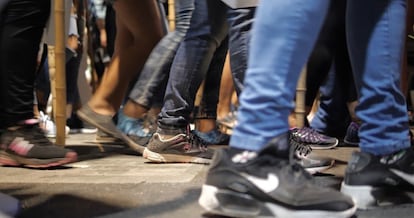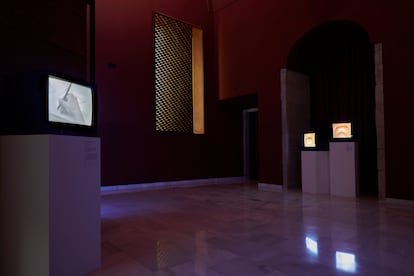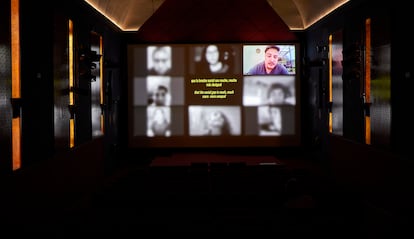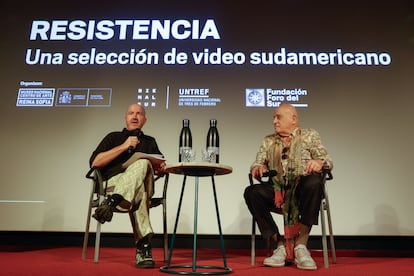A decade ago the Bienalsur explains its general director, Aníbal Jozami, tries to “bring South American art where people are.” Therefore, unlike the usual artistic biennials, they transfer works by the creators of South American to more than twenty countries around the world. This year one of the exhibitions of the International Fair of Contemporary Art born in Argentina has landed in the film hall of the Reina Sofía Museum, turned into a more cultural refuge against summer heat, to present Endurance, An exhibition that brings together seven video art works by various South American artists (and a Mexican). A selection that travels the beginnings of video art in Latin America to land in the present.
The video is the perfect means to meet that objective of globalization, the biennial embryo. “One of the advantages of video art is that it is much more transportable and you can reach many more people than in a normal exhibition,” said Jozami in the presentation on Wednesday.
The exhibition they propose in Madrid, curated by Diana Wechsler, presents two axes. Before entering the old Sabatini Auditorium of the Museum, since this year remodeled and turned into a cinema, the visitor finds a preamble in a small exhibition room with four historical works of the Latin American video art: from a creation of the Brazilian Anna Bella Geiger of 1993, to one of Argentina Graciela Saco, finished in 2017; Going through the work of Uruguayan Clemente Padín, made in 1939. But the main course is in the room, where three longer works are projected, one behind another and in loop, all of recent creation.

A proposal that also aims to boost a new project in the Madrid Museum. “I like to say that it is exhibition cinema and not Videoarte, which sounds old. This is a pilot episode that we hope to use later. It is the inauguration of a series of projects dedicated to experimental cinema, video art and new media,” explained its director, Manuel Segade.

For about two hours, they pass through the place of the place Thousands march, of the Argentine Sebastián Díaz Morales, who portrays the masses in a series Manifestations of Buenos Aires, but without showing faces or flags; Hot earth fictions, of the Colombian Francisca Jiménez Ortegate, a visual essay that explores the different stories that arise when observing the landscapes of the Colombian areas most affected by violence; and Trauma ocular, From Chilean Voluspa Jarpa, the heartbreaking story of eleven young people who, after shooting from the police in his country, have lost vision in one of his eyes. “They are all pieces that allow to represent modes of resistance, hence the title of the sample. They are fundamental because still, as we see unfortunately today, the society of the present and it seems that the future will have to continue maintaining these attitudes of resistance,” Segade insists.

They are not cinematographic works, they are rather experimental and abstract productions, but they benefit from gender infrastructure. The reproductions of the material in the comfortable seats of the newly opened cinema, eliminate one of the problems that the habitual exhibition rooms usually have when showing content like this: the discomfort during the viewing. It also has an enveloping sound that enhances the experience.

Until September 1, when heat loves, Endurance It will open to the public a comfortable space to know that sometimes unknown southern art in video format – not video. For Segade, this sample is an opportunity to use the Museum’s modern film room, which is normally closed in the summer months and that, from now on it can be used to show “exposure cinema” and at the same time serve as a “climate refuge”, one more way to attract public to the institution and “enhance that people use the museum in other ways”.

